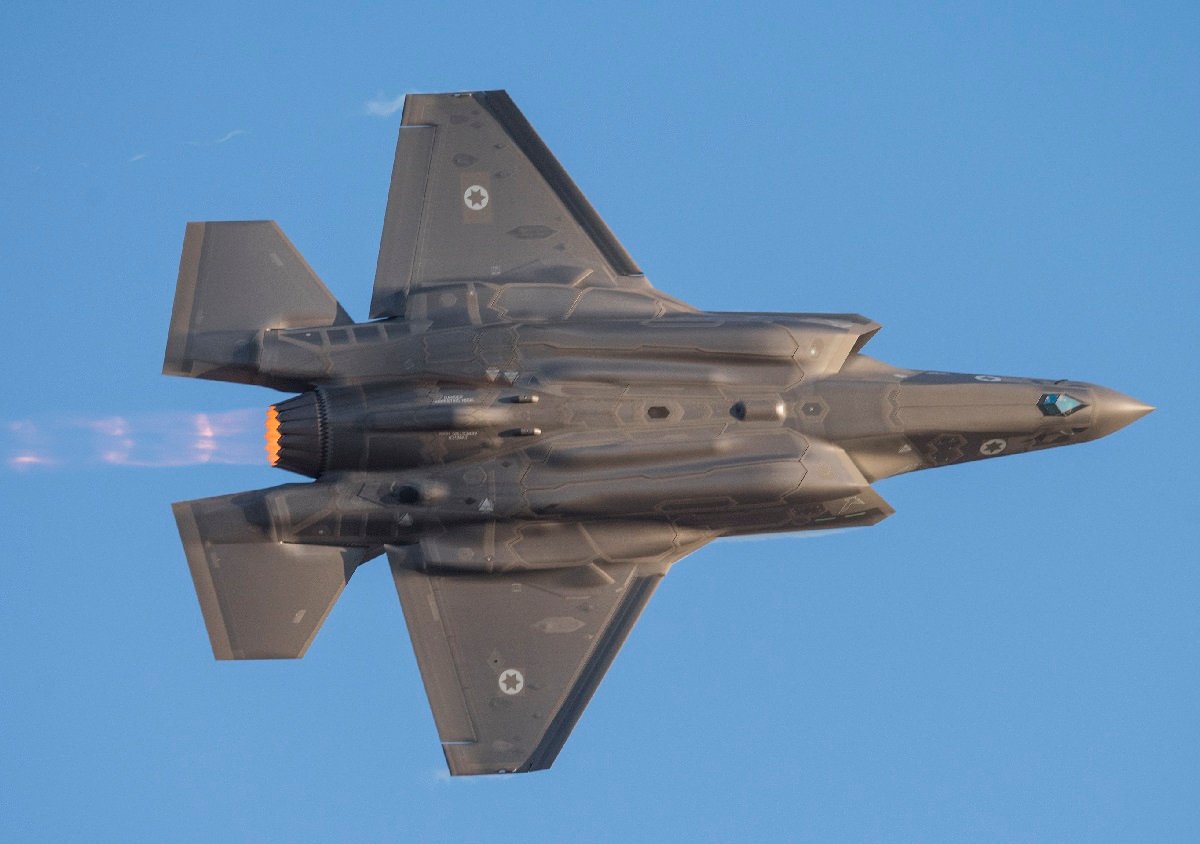Last week, six Israeli Air Force Lockheed Martin F-35I “Adir” fighter jets took flight to Italy to begin a two-week air exercise – its first overseas training mission involving the fifth-generation stealth fighters. United States Marine Corps and Royal Air Force F-35B Lightning II aircraft also headed to Italy to take part in the joint training drills.
A Historic Training Session
The fifth-generation IAF jets took off from Israel last Thursday and are currently participating in the two-week-long “Falcon Strike 2021” with the partner aircraft. According to a report in The Jerusalem Post, in addition to the F-35s from the 140th squadron, Israel has also sent F-16A/Bs from the 116th Squadron, G550s from the 122nd Squadron as well as refueling tanker aircraft from the 120th squadron. This marked the first time that Israel’s modified F-35I has been deployed aboard.
A variety of partner aircraft is taking part in the joint operations, and that included U.S. Air Force F-16 Fighting Falcons, while the RAF has sent Voyager A330 refuelers. The Italian Air Force deployed F-35A and F-35B fighters, as well as KC-767 refuelers and a KC-130J to track the progress of all the aircraft taking part in the drills.
During Falcon Strike 2021 the host nation is acting as the enemy (red) air force with its Eurofighter Typhoons, Panavia Tornado jets, Bell Agusta helicopter, AMX International ground-attack aircraft, and predator drones.
The drills, which began on Monday, were meant to provide multinational forces with the opportunity to test and improve shared technical and tactical knowledge, while conducting complex air operations in a multinational, joint force environment. Amendola Air Base, Italy is the main operating base for Falcon Strike 21 and all training scenarios will take place in Italian air space.
“In addition to enhancing combat readiness and strengthening bonds between allies and partners, Falcon Strike 21 provides participants the opportunity to develop capabilities in planning and conducting complex air operations, leading to an advanced level of training,” the United States Air Force said in a statement. “Participation in multinational exercises like Falcon Strike 21 enhances our professional relationships and improves overall coordination with allies and partner militaries during times of crisis.”
According to the report from The Jerusalem Post, a senior IAF official added that the drill had been planned for at least a year, and a goal of the exercise was the strengthen cooperation and capabilities between forces that also fly the F-35s as well as to train in an unfamiliar arena and improve the deployment capabilities of the F-35s.
Training for War. But Against Who?
During the two week long exercise, the Israeli F-35s will take part in two sorties peach day where first they will fly with the Americans, while in the second daily sortie they will fly with the RAF and Italian Air Force. During each, the Israeli pilots will simulate airstrikes on targets behind enemy lines as well as in-ground support missions – all while flying over unfamiliar terrain. The pilots will also practice air superiority and air-to-air battle scenarios.
“This exercise has great value in our ability to deploy the F-35 to remote bases and allows us to increase the squadron’s performance,” the senior Air Force official said, adding that “the drill is a fertile ground for mutual learning between the forces, focusing on the Adir system.”
This could certainly put the Israeli F-35I fighters to the test, and could be a good way for the pilots to work with fourth-generation aircraft. The IAF received its first F-35 fighter jets in December 2016 and the Middle Eastern nation, which is currently the sole operator of the Lockheed Martin stealth fighter, has been adding more of them to its fleet in groups of twos and threes in the interim four and a half years up to its current level of twenty-seven aircraft. An additional twenty-three F-35 jets are due to arrive in Israel by 2024 to fill the IDF’s current order of fifty aircraft, though Israeli officials have said they plan to purchase more.
Peter Suciu is a Michigan-based writer who has contributed to more than four dozen magazines, newspapers and websites. He regularly writes about military small arms, and is the author of several books on military headgear including A Gallery of Military Headdress, which is available on Amazon.com.

